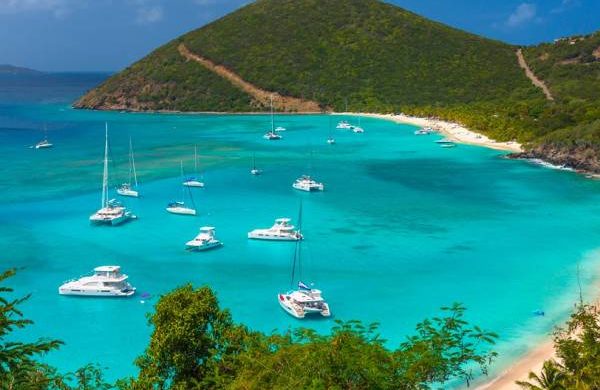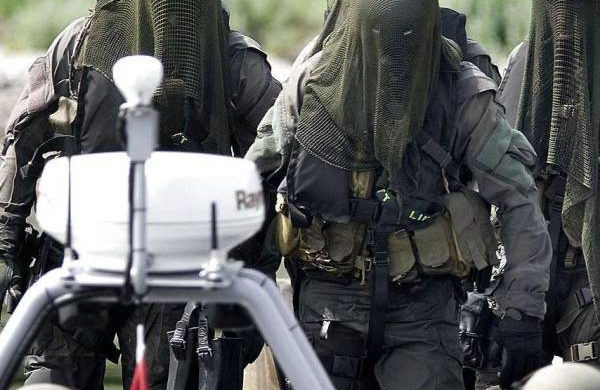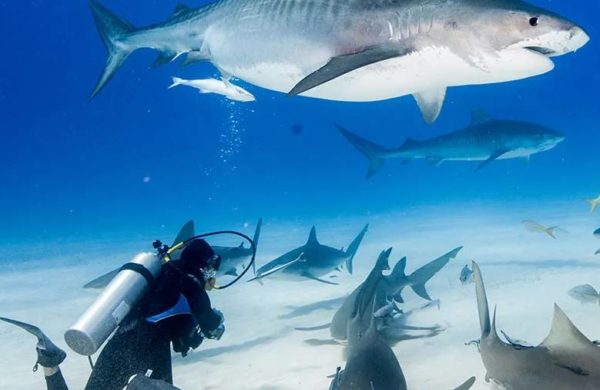Lifeguards in Maui have begun tracking equipment worn by snorkelers who drown in their jurisdiction and other counties appear poised to do the same.
A state water safety committee on Wednesday heard poignant testimony from the husband of a California woman who drowned off the Big Island last year while wearing a new type of snorkel mask that he thinks may have contributed to her death.
On Wednesday, in a boardroom at the Hawaii Convention Center, Guy Cooper took a deep breath and regained his composure before continuing the story of how his wife drowned in September while snorkeling off the Big Island.
The Hawaii Drowning and Aquatic Injury Prevention Advisory Committee, a group of ocean safety experts, state and county officials, tourism industry leaders and others, put Cooper on its agenda after he raised concerns about the role of the full-face snorkeling mask his wife had been wearing. The committee is now co-chaired by Gerald Kosaki, a Hawaii County Fire Department battalion chief who oversees ocean safety, and Ralph Goto, retired administrator of Honolulu’s Ocean Safety and Lifeguard Services Division.
“On one hand you have an activity rife with significant physical demands, then you exacerbate the situation by adding a new piece of inadequately vetted equipment with inherent design flaws,” Cooper said. “A perfect storm.”
Guy Cooper displays a full-face snorkeling mask like the one his wife was wearing when she drowned.
The 68-year-old retired nurse from Martinez, California, has also complained about significant gaps in data collection by government agencies.
He’s calling for a database that logs information about the equipment worn in each drowning so authorities can analyze it for dangerous trends, much the same way that the National Highway Traffic Safety Administration collects data to determine if a particular type of airbag is faulty in fatal car crashes.
He isn’t sure the Azorro mask his wife, Nancy Peacock, 70, bought on Amazon is the culprit. But he isn’t sure it’s not either.
And that’s why Cooper, and now a growing list of health and ocean safety officials in Hawaii, are looking at collecting the data necessary to better evaluate the product and possibly even conduct controlled scientific studies on it.
Some people who have tried the full-face masks, a next-era design in snorkeling, have complained that they leak and are difficult to remove quickly because of the heavier straps. Some have cited the potential for carbon dioxide to build up and cause fainting.
Cooper said a surfer found his wife floating on her back in Pohoiki Bay with the mask partially pulled up over her nose.
“That tells me she was in trouble and tried to get the damn thing off — too late,” he said.
Colin Yamamoto, Maui County’s Ocean Safety battalion chief, met with Cooper in January.
“What was intriguing to me is we have no data on these,” Yamamoto said. “It’s something we never thought about.”
Yamamoto has directed Maui County lifeguards to start documenting what type of snorkeling equipment was used in drownings.
Fire officials from the other counties are also moving in that direction.
“Maybe we can start individually with each jurisdiction keeping track of that,” Kosaki told the advisory committee. “We can’t make a policy saying, ‘yeah, we’re all going to keep track of it now,’ but I think each individual jurisdiction can make their own policy or procedures or try to keep a database.”
Hawaii County Battalion Chief Gerald Kosaki and officials from other counties have been receptive to Guy Cooper’s concerns about the policies for drowning incidents.
Kauai Ocean Safety Supervisor Kalani Vierra said the type of snorkeling equipment worn in a drowning is something county lifeguards on the Garden Island can include in their incident reports. He added that he will bring it up at a national conference for lifeguards later this year.
Honolulu Ocean Safety Chief of Operations Kevin Allen noted that in some drownings, the mask sinks to the ocean floor during the rescue and may not be recovered. But he was also open to the idea of tracking such information when it’s available.
Dan Galanis, state epidemiologist, told the committee there were at least 149 snorkeling-related deaths in Hawaii’s waters from 2006 to 2015. Of those, 137 were visitors.
“The reality is we really don’t have the data to say snorkeling is more risky,” he said. “Right now, all we can say is a lot of our visitors die doing it.”
Guy Cooper’s wife, Nancy Peacock, drowned in September at Pohoiki Bay on the Big Island.
Nathan Eagle/Civil Beat
A Civil Beat special project, “Dying For Vacation,” published in January 2016, found Hawaii’s visitor-drowning rate is 13 times the national average and 10 times the rate of Hawaii residents. Local water safety experts have cited Hawaii’s unique ocean conditions, insufficient messaging to caution the public and the health of the individual as contributing factors.
Cooper brought a full-face mask like the one his wife had to the meeting. Advisory committee members passed it around, some some of them seeing this type of mask for the first time and reacting with comments like, “I’d be claustrophobic” and “that’s weird.”
“All I ask is that you give serious consideration to the role of these new masks,” Cooper said. “Devote the resources to collect the data. Incorporate the data in incident reports and databases. Look for trends. Make the coroner aware of their use. Secure the gear as evidence. Only then will you truly be able to assess the risk.”
Cory Lum/Civil Beat
https://youtu.be/aWRgzIKau6w



